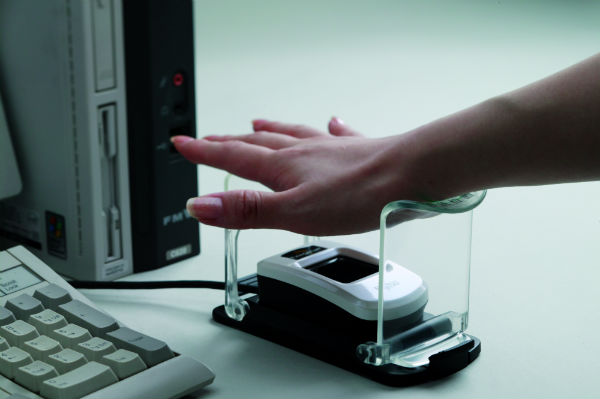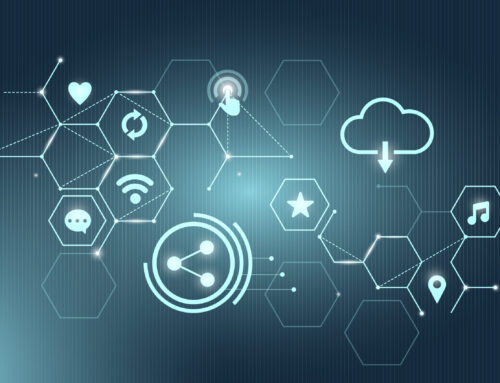Every fingerprint is unique which is why it is quite famous for authentication needs, crime investigation, medicine to identify an individual identity. It has descended quite more vastly in the market as smartphones with fingerprint scanners are available at low cost.
India’s Unique Public Identification System called ‘Aadhaar’ uses fingerprint and Iris scan as biometrics which opened a vast scope for identifications in the Public, Private and Banking sector.
However, the fingerprint has its drawbacks too. Fingerprint scanning leaves a print on the surface of scanner which in-turn can get used for making copies and retrieving sensitive information.
A hackers club namely ‘Chaos Computer Club’ fooled Apple’s TouchID by creating fingerprint copies that could be used to unlock the iPhone 5S. They stated that fingerprints are pretty unsafe when it comes to private and confidential information.
Vein Pattern Recognition also is known as ‘VPR’ is the latest biometric technology that is developed and not much into market use. Even under development, Vein Pattern recognition is giving befitted competition to fingerprint recognition and iris recognition. It is a contact-less type of modality which means no direct contact is required by the individual to get the image of veins.
Recognition of Vein Pattern
For extracting a vein pattern from palm, a near-Infrared (NIR) light get exposed to the area of getting a pattern. Hemoglobin, a red pigment in the blood which is mainly composed of iron, and carries the oxygen in the bloodstream absorbs this NIR light.
The concentration of hemoglobin in veins is much lesser than what the arteries. That’s why the veins absorb a much higher level of the NIR light. Therefore, when a Vein recognition device captures raw images of a palm, the pattern appears much darker and more robust. There is ongoing development to make devices that capture better images and give a high-end pattern.
When asked upon how vein patterns develop and are unique, the blood vessel pattern which forms the Retina & the unique pattern of veins develop within the first eight weeks of gestation.
There are three types of vein pattern recognition:
- Palm Vein Pattern Recognition
- Finger Vein Pattern Recognition
- Retina Vein Pattern Recognition
Palm vein pattern recognition already discussed above, finger vein pattern deals with recognition of a single finger through the surface area here is much smaller. Finger pattern recognition is less user-friendly as the finger needs to be positioned more precisely on the scanner. There are fewer reference points, making difficult to recognize the pattern correctly.
Retina Vein pattern recognition based on the complex structure of capillaries that supply blood to the retina, making every retina pattern unique. It is becoming highly unpopular since people have to keep their head straight and many even don’t like light exposed to their eyes.
The market for Vein Recognition Technology
Many companies and businesses have already implemented vein pattern recognition for daily authentication services. Here are some of them:
- Safran is a leading international Technology group with headquartered in Paris, France. Safran offers vein and print access control terminals to bring the benefit of finger vein/fingerprint recognition to physical access control systems.
- PalmSecure offers a palm vein device offered by Fujitsu that captures an individual’s palm image with near-infrared rays. The false rejection rate of 0.01% and a false acceptance rate of less than 0.00008% ensures its high accuracy. The device is easy to integrate with any device and work in almost any conditions.
- Fujitsu is an international IT equipment and services company that provides high-end vein recognition technology. Their devices can get applied at companies where time and attendance tracking, physical access control, user authentication required for PCs, Servers, and much more.
- Biyo (formerly PulseWallet) provides vein pattern recognition to create the most secure and convenient password that consumer never has to remember. Biyo was the first company to create payment terminals through your palm. Your hand becomes your payment method via a reliable scanning of veins. Forget carrying your credit cards and remembering PINs.
Vein Pattern Recognition Technology has far more benefit on any other biometric systems currently used. One of them is that they don’t leave behind prints the way fingerprints do. Also, it’s much harder to recreate the exact geometry of veins, so it is almost impossible for any fraud to take place. Though currently being less used and in development, it is undoubtedly a breakthrough technology in the authentication and identification systems.




